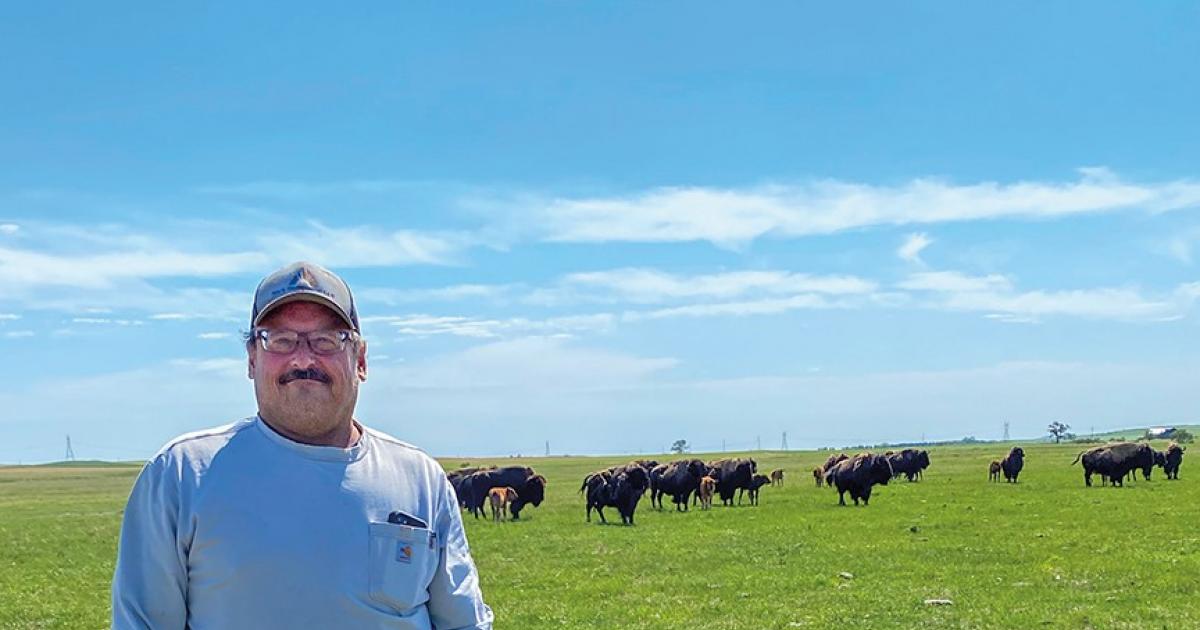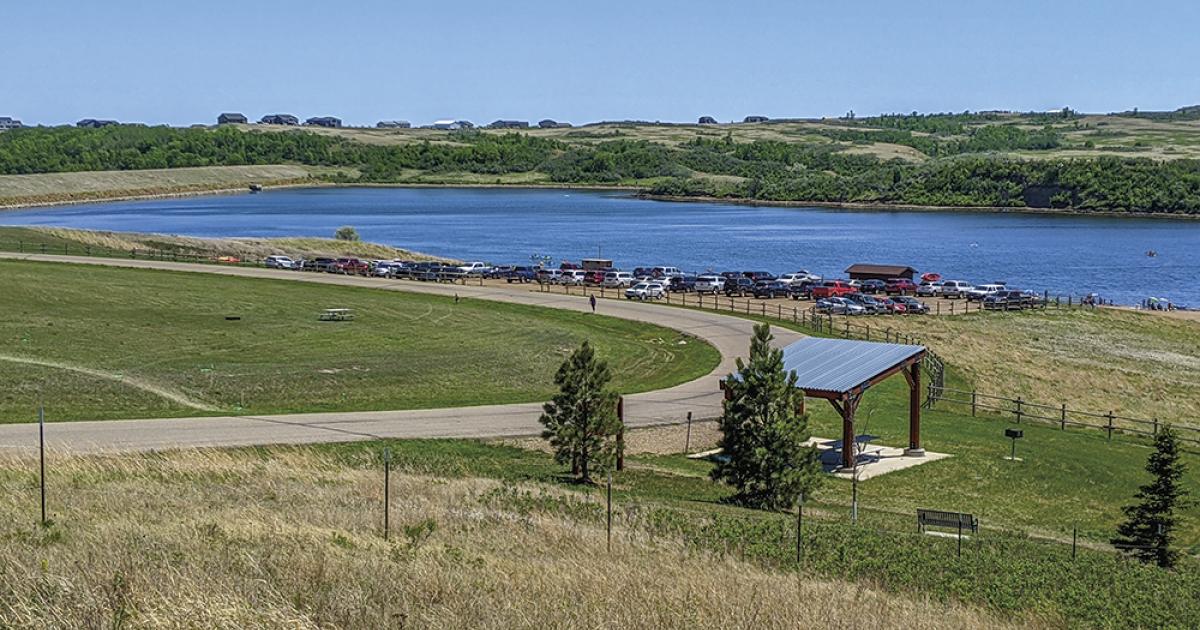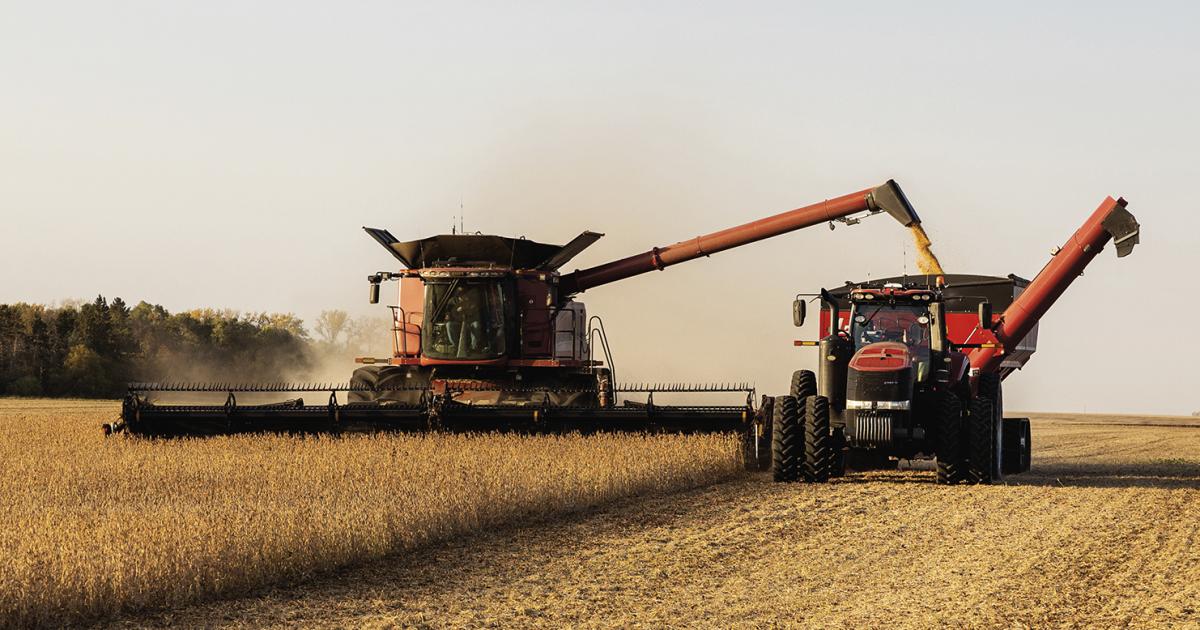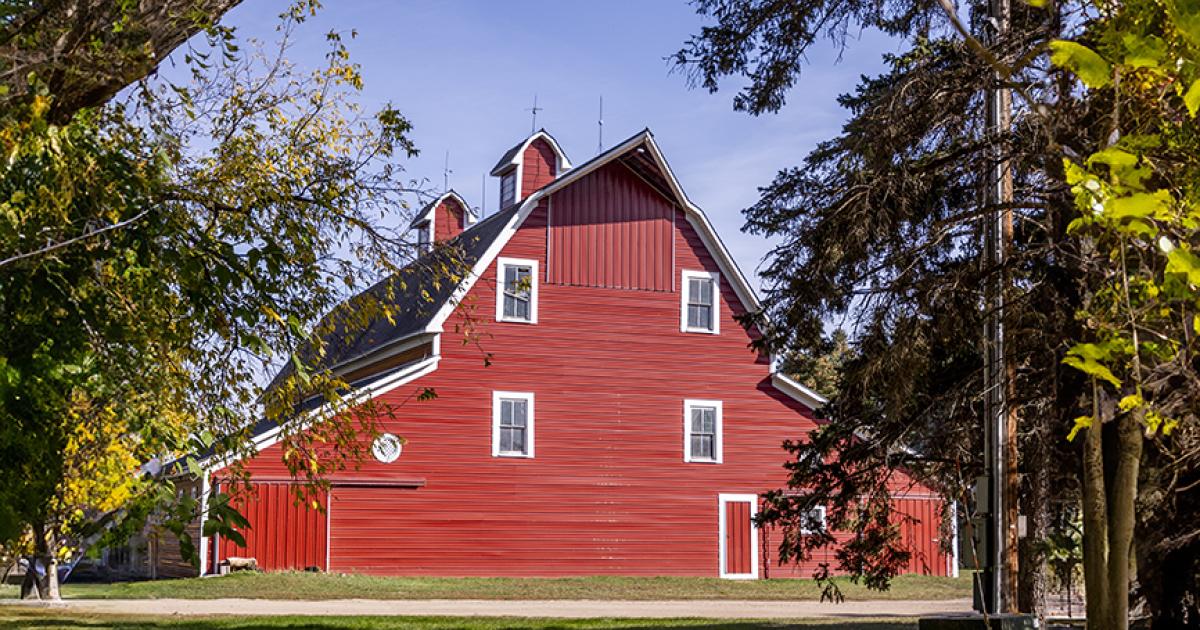Bison ranch expands niche with 701 Meats
As if ambling off the pages of a dog-eared western novel, the shaggy bison warily circle the pickup. Indian Springs Bison owner Roy Krivoruchka and his family, members of Roughrider Electric Cooperative, have raised bison near Belfield the past 30 years, expanding the ranch’s reach to the consumer with the opening of 701 Meats just a mile down the gravel road from the ranch.
Inside 701 Meats, Roy’s youngest son, 22-year-old Jayden Krivoruchka, momentarily opens the high-tech smoker, revealing a line of sausages. The aroma of smoked sausage permeates the plant, where beef, hogs and lamb are processed. And the ranch’s bison.
Indian Springs Bison owner Roy Krivoruchka and his family have raised bison near Belfield the past 30 years, expanding the ranch’s reach to the consumer with the opening of 701 Meats just a mile down the gravel road from the ranch.
“It’s a niche market, but it’s getting more popular,” Jayden says. Restaurants and grocery stores on the coasts have a demand for bison meat, pushing the retail price about $1 a pound more than beef.
Jayden attended Canada’s National Meat Training Center in Alberta and graduated as a professional meat cutter after four months of full-time training. While he was training, he and Roy sent 25 or more sketches back and forth, detailing their dreams of a processing facility.
The plant opened in December 2019, on the cusp of the COVID-19 pandemic.
“Then it got really busy and it hasn’t slowed down since,” Jayden says. The plant sells quarters, halves and wholes or processes animals for ranchers. Bison and beef are taken to Sturgis, S.D., where U.S. Department of Agriculture inspection allows 701 Meats to process the meat into retail cuts sold at the local counter.
Bison sausage, meat sticks, steaks, roasts and hamburger are all sold at the retail counter at 701 Meats. The plant also sells beef and pork products.
“Mainly all of our products are North Dakota products, so 701 represents the state of North Dakota with the area code,” Jayden says.
The facility links local ranchers and consumers, allowing consumers to see exactly where their meat originates.
“More people are buying from the rancher, and the rancher needs a place to get it cut up, so more ranchers are selling quarters and halves,” Jayden says. “People are finishing more of their own beef, because there’s more of a demand for it.”
And consumers see the benefit of farm-to-table purchasing.
“They can see where it came from and how it was raised. I think that plays a big role in why area meat shops are so busy,” Jayden says.
Processing to plating
With a foundation of consumer demand, bison burgers and steaks are now common menu items at mid-level restaurants, and buffalo ranchers are experiencing a stable market, although demand dipped during the COVID-19 pandemic as fewer restaurant meals were served.
While Indian Springs Bison markets its bison at 701 Meats, the facility can only process 10 to 12 animals a week, which means the ranch’s bison are also sold elsewhere in the spring and fall.
A domino effect occurred when a Sioux Falls, S.D., hog processing plant closed due to COVID-19, shifting that processing to other facilities, including one that had purchased animals from Indian Springs Bison.
So, the ranch now sells bison to North American Bison Cooperative in New Rockford and Western Buffalo Co. in Rapid City, S.D., along with 701 Meats.
Jayden’s dad and mom, Cheryl, help their son at the facility, which has six employees and a waiting list about a year out.
“He’s very fortunate to have very good employees,” says Roy, who was able to step back from the day-to-day operation because of those good employees.
The family encourages consumers to at least taste bison, especially using the recipes in North Dakota Living.
“It’s quite a bit leaner than beef. Low and slow is good and not well-done. Medium and medium rare is better in bison, because it’s so lean,” Jayden says. There are 2.42 grams of fat in a 100-gram serving of cooked bison, compared to 10.15 grams of fat in a 100-gram serving of cooked beef, according to the National Bison Association. The association offers tips on cooking bison at https://bisoncentral.com/how-to-cook-bison(link is external).
Ranch raised
While vertically integrating with its own processing facility, Indian Springs Ranch is also unique with its feedlot of bison. The ranch has about 35 cow/calf pairs, but feeds about 400 head of bison, purchasing bison from other ranches.
Most of the shaggy beasts are penned in the ranch’s feedlot, where Roy feeds the heifers to 1,000 pounds and the bulls to 1,200 pounds, then markets the bison.
Roy also raises 150 commercial Angus and Angus/Hereford cross beef cattle and appreciates the differences between bison and cattle.
With a full-time job off the ranch, he found bison require less maintenance than beef cattle, due to calving ease and fewer health issues.
“We were looking for less work. Less demanding at calving time, so that’s why we turned to them,” Roy says.
“They are just less demanding for labor. They are hardier in the cold. They rotate in a pasture themselves. The beef cows will hang to the water, where a buffalo will graze away and come back,” he says.
Bison do have challenges, as fencing and handling facilities must be sturdier, with 7-foot fences and solid facilities.
“The wire has to be above their eye. The rule of thumb is above their eye and they will not try to jump. … In a handling facility, if they can see through it, they’ll try to run through it, but if they can’t, they won’t even try,” Roy says.
Behind those 7-foot fences, the ranch has found its niche. And down the gravel road, 701 Meats helps that niche grow.
Luann Dart is a freelance writer and editor who lives in the Elgin area.
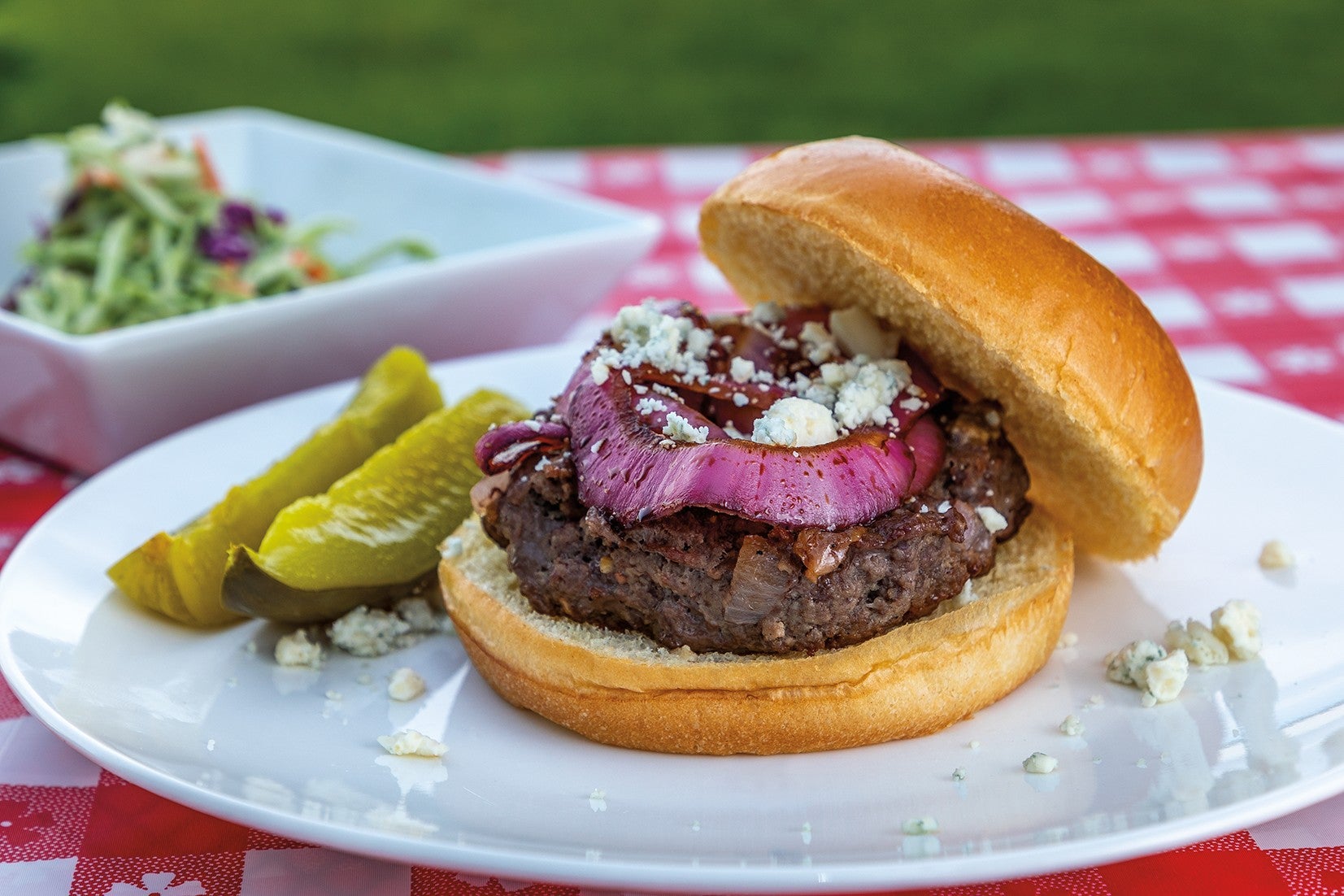
1½ lb. ground bison
1 T. Dijon mustard
2 T. shallots and garlic, roasted and chopped
1 tsp. Worcestershire sauce
Splash extra virgin olive oil
Salt and pepper, to taste
Blue cheese or Roquefort
2 red onions, sliced
Balsamic vinegar
2 bulbs fennel, sliced
Combine ground bison, Dijon mustard, shallots, garlic, Worcestershire sauce, splash of olive oil, salt and pepper. Form mixture into six patties, adding approximately 1 teaspoon of blue cheese into the center of each patty. Grill to order.
For garnish, drizzle red onions with extra virgin olive oil and balsamic vinegar. Grill under tender. Sauté fennel in olive oil until tender. Toss onions and fennel together and serve on bison burger.
Recipe by Kathy Cary for the National Bison Association
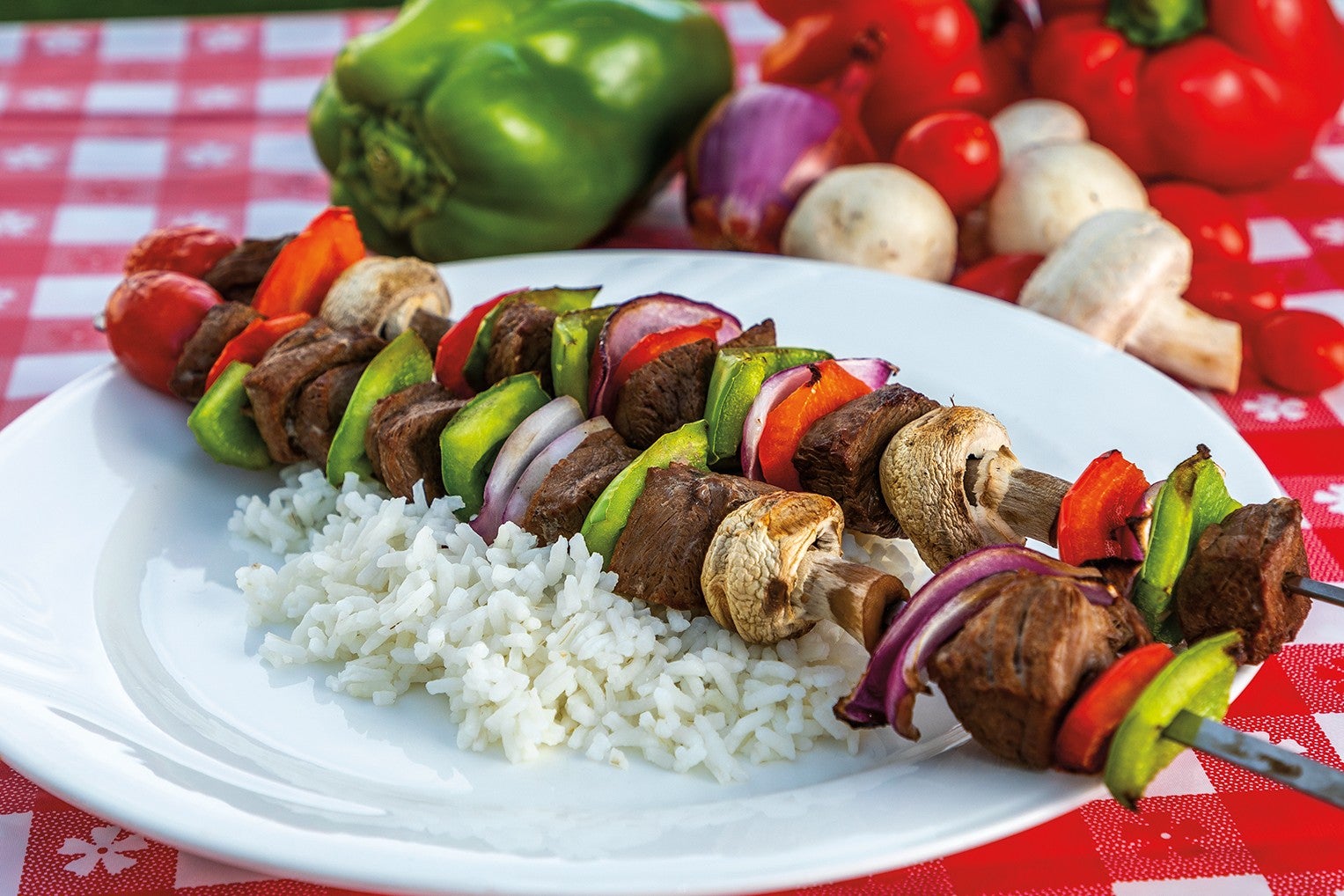
1½ lb. bison sirloin or tenderloin, cut into bite-sized pieces
6 c. water
2 c. soy sauce
1 c. onion, diced
Worcestershire sauce
Salt, pepper and garlic salt
Combine marinade ingredients. Soak bison meat in marinade for at least 6 hours. Skewer and grill. Or, roll marinated tips in flour and deep fry until desired doneness.
Recipe by the Roy Krivoruchka family, members of Roughrider Electric Cooperative


